1 The essence of the pathology
At its core, intestinal colic is an attack of pain in the intestine, which usually ends with a sharp painful urge to empty it. Pain sensations are most often analogous to muscle cramps with excessive intestinal activation.
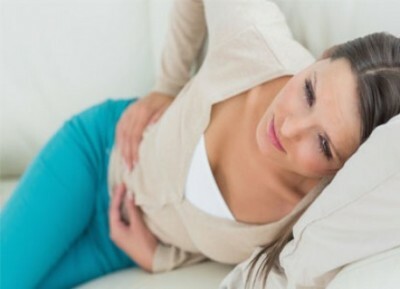
Recommended to read
- Causes of poor digestion of food in an adult
- Nutrition for intestinal dysbiosis in adults
- Causes and treatment of abdominal and gingival swelling in the intestine
- Effective agent for gastritis and gastric ulcer
Intestinal colic, the symptoms of which are usually pronounced, should not be regarded as an independentdisease. This pathology is considered as a symptom of some diseases of the gastrointestinal system. Colic in the abdomen is the result of a spasm of the large or small intestine, which causes cramping pain. This phenomenon has a poly-therapeutic mechanism, so the symptoms and treatment of similar abnormalities in the abdomen in adults should be considered from an experienced specialist with full-fledged research.
2 Etiology of the disease
Intestinal colic of varying degrees of intensity and duration may be caused by several reasons, both internal and external. Among them, the following are distinguished:
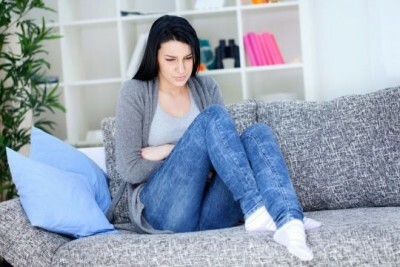
- Diseases of the digestive system: gastritis, ulcer, abnormalities in the liver, gallbladder, pancreas. They lead to digestive dysfunction, as a result of which poorly digested food causes spasms in the small intestine.
- Use of products that cause fermentation, bloating, flatulence and intestinal pains: kvass, sauerkraut, yeast-containing foods and yeast dough products, soaked apples.
- Violation of diet and diet: irregular eating, eating large portions of food, eating without drinking, fast food, frequent use of smoked, fatty, spicy and fried foods. In this case, the usual diet will help.
- Poisoning products, poisonous mushrooms and berries, medicines.
- Intestinal infections( salmonella, dysentery bacillus, etc.), provoking food toxicosis.
- Psychological stress and prolonged nervous overload in people with increased excitability and psychological sensitivity( an important examination, a meeting, an interview, etc.).In this case, the pain syndrome is often accompanied by diarrhea.
- Poisoning by compounds based on heavy metals( often - people working in hazardous industries or living in the area of action of such industries).Particularly dangerous is lead and its salts( specific lead intestinal colic).
- Helminths( worms) on the walls of the intestine.
- Respiratory viral infection that causes inflammation of the abdominal lymph nodes. Spastic pains in the intestine arise as a result of processes in the mesentery of the small intestine. In this case, the symptoms of the intestinal nature are combined with respiratory signs and symptoms of general intoxication of the body.
- Intestinal obstruction( manifested as a violation of motor function, stretching of the intestinal loop, accumulation of stool, the appearance of adhesions, tumors).
- Excessive physical activity.
-
 IMPORTANT TO KNOW! Gastritis? Ulcer? To have a stomach ulcer not turned into cancer, drink a glass. ..Read the article & gt; & gt;
IMPORTANT TO KNOW! Gastritis? Ulcer? To have a stomach ulcer not turned into cancer, drink a glass. ..Read the article & gt; & gt;
3 Symptomatic manifestations of
When intestinal colic develops in adults, the symptoms appear unexpectedly and develop rapidly with the manifestation of a sharp pain syndrome, often receding into the lumbar zone. Attacks are provoked by physical stress or rapid running, but most often observed after a plentiful meal. The abdominal pain has a cutting character and gradually progresses.
-
 Gastroenterologist. IMPORTANT: "I beg you, if you began to worry about abdominal pain, heartburn, nausea, do not in any way do gases. .."Read more & gt; & gt;
Gastroenterologist. IMPORTANT: "I beg you, if you began to worry about abdominal pain, heartburn, nausea, do not in any way do gases. .."Read more & gt; & gt;
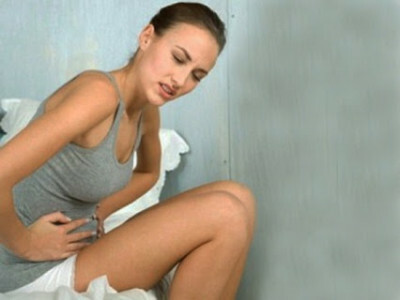
At the peak of the manifestation of bowel spasm, the pain syndrome reaches such a level that the patient can moan or scream. There is increased excitement. With a prolonged attack, irradiation of pain in the inguinal zone and even genital organs is observed. Intestinal colic may subside, and then grow again.
Flowing processes have an irritating effect on the nerve fibers of the peritoneum, causing a violation of the removal of gases and feces. As a result of such exposure, symptoms such as flatulence, nausea, headache appear. A person with hypertensive disorders may have high blood pressure. The attack exhausts and weakens the patient. When the intestinal colic ends with diarrhea, there comes a relief: the pain syndrome drops sharply. At the same time, a slight aching pain can persist for a long time.
In the case of colic in the stomach accompanied by acute gastritis, the symptoms are characterized by such symptoms as nausea, vomiting, bloating, belching. With gastric spasms, diarrhea occurs with mucous secretions. Intestinal obstruction causes severe vomiting. There is a significant decrease in blood pressure, which leads to weakness, pallor, cold sweat, even prostration. With such signs urgent hospitalization is necessary.
TIP FROM THE MAIN GASTROENTEROLOGIST
Korotov SV: "I can recommend only one remedy for the rapid treatment of Ulcer and Gastritis, which is now recommended by the Ministry of Health. .." Read the reviews & gt; & gt;
Most often intestinal colic is not accompanied by an increase in temperature. However, if the mechanism of their appearance is based on infectious damage, the general intoxication of the body manifests itself explicitly, including in the form of a temperature rise above 38 ° C.In general, the symptoms in this case in many ways resemble the signs of a cold.
4 Diagnosis
How to treat the pathology, the doctor determines after conducting the whole complex of diagnostic procedures. An initial diagnosis is made by analyzing complaints, anamnesis, external examinations and palpation. Particular attention is paid to the analysis of stool. The following studies are carried out: determination of enzyme activity( coprogram);identification of helminthic invasions;sowing feces for intestinal infections;analysis for the presence of dysbiosis. The final diagnosis allows you to do the following examinations: gastroduodenoscopy, cholecystography, colonoscopy, ultrasound of the abdominal cavity.
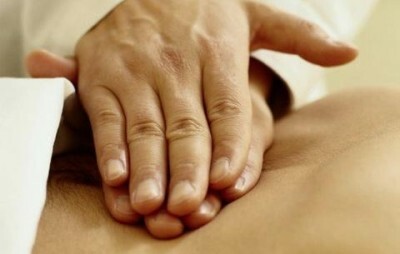
5 The main methods of treatment
Given the numerous variants of the onset and development of intestinal colic, only a doctor can prescribe a treatment regimen for the disease after an accurate diagnosis has been made. It is important to correctly identify the true causes of pathology. At the same time, when an attack occurs, measures need to be taken. First of all, a fasting is provided for a period of at least 12-15 hours after the attack. The first medical help usually consists in the appointment of antispasmodics. They are advised to take it inside, but if there is vomiting, it is recommended to inject by injection or in the form of rectal suppositories. The most common primary therapy regimens are Drotaverine or No-shpa and mint tea;Single use of Bicarbon, Besalol, Bellalgina or Belladonna extract;Papaverin together with Platyphylline;activated carbon( 0.5 g per 10 kg of human body weight);an enema with a solution of mint infusion with a chemist's daisy.
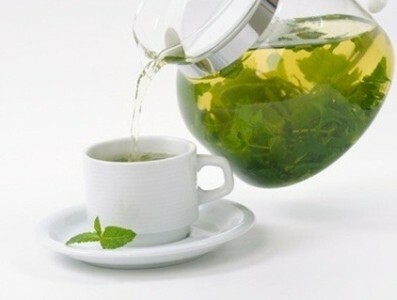
Diet for intestinal diseases is an indispensable element of treatment. When colic from the diet should be excluded from fatty and fried dishes, spicy, pickles, marinades, smoked products. Do not enter into the menu products such as seasonings, preservatives, sweet foods, sweets, yeast products, drinks with gas. Diet with intestinal colic, with pain in the intestines means porridge, vegetable dishes, low-fat cheeses, fish. A useful effect is the use in the morning on an empty stomach carrot or spinach juice, fruits and vegetables.
Care should be taken to ensure that the food is adequate and balanced. It is worth giving preference to foods with a high content of fiber and vitamins( raw and boiled vegetables, especially mashed carrots, apples, pumpkins).Positively affects the body the use of fermented milk products and therapeutic tea. The diet provides for the exclusion of products that cause gassing: cabbage, corn, turnips, legumes.
Drug therapy is prescribed by a doctor after establishing the causes of colic. If the intestine is of various types, the following treatment methods are used:
- Antibiotics of a wide range of effects with an infectious obstruction mechanism.
- Paranephalic blockade and spasmolytic drugs in case of spastic obstruction.
- Paranephalic block and ganglion blockers with paralytic type obstruction.
If a significant mechanical obstruction is detected, surgical intervention is necessary.
For the treatment of colic of different etiology and pathogenesis, various drugs are used at the doctor's discretion. The following medicines are most widely used:
- Activated carbon( a sorbent to eliminate toxins and fermentation products, is used for poisoning, digestive disorders, high gas production).
- Sorbeks( analogue of coal, useful for alcohol poisoning and malnutrition);
- Atoxyl( sorbent of the fourth generation, eliminates toxins, allergens, pathogenic microorganisms, is prescribed for acute intestinal disorders, infections, intoxication);
- Spazmalgon( a universal remedy with the effect of antispasmodics and anesthetic);
- Spasmoman( blocker of M-holinoretseptorov, reduces muscle tension, normalizes motor functions, relieves spasms);
- No-spa( the most common antispasmodic drug);
- Buskopan( designed to eliminate spasms, normalizes the secretory function of the glands, is useful in intestinal and renal colic).
Intestinal colic can be caused by numerous causes, the nature of which can only be determined by a specialist. Strong pain syndrome with intestinal colic must necessarily be treated, but the therapy should appoint a doctor. Self-medication is dangerous, as it can lead to serious complications.
- 1 Essence of pathology
- 2 Etiology of the disease
- 3 Symptomatic manifestations
- 4 Diagnosis
- 5 Basic treatment methods
Colic in the intestine in adults have a different etiology and may be a symptom of a dangerous pathology. The sharp strong pains that characterize this phenomenon cause rather complicated problems, knocking out of the habitual life rhythm and decreasing the ability to work. Treatment of pathology is necessary to avoid serious complications, but self-treatment without clarifying the true causes can be dangerous. When there are obvious colic in adults, symptoms, treatment should be analyzed and established by a specialist.
Do you have gastritis?
GALINA SAVINA: "How easy is it to cure gastritis at home for 1 month. A proven method is to write down a recipe. ..!"Read more & gt; & gt;



